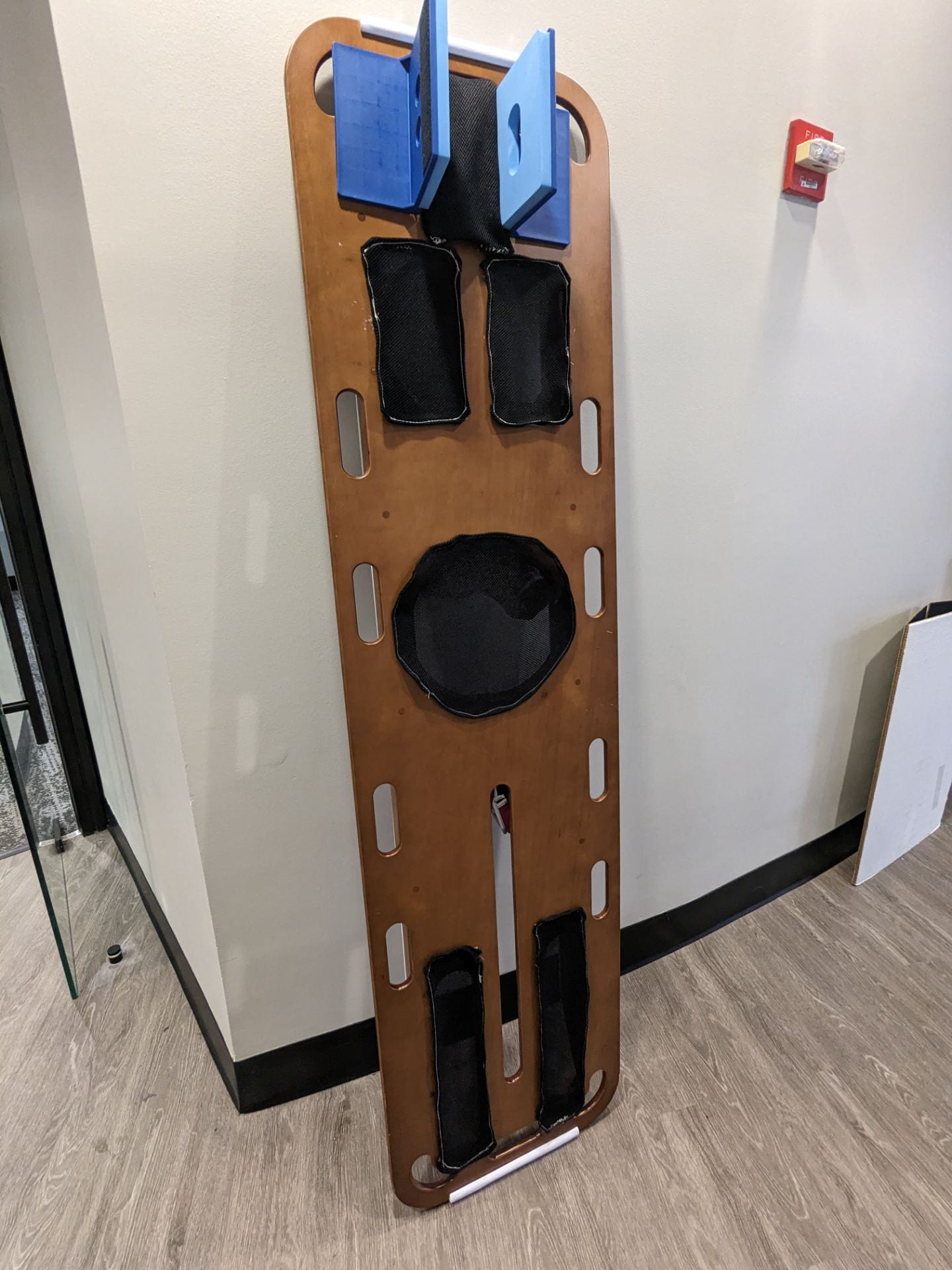Get to know our team:
Ryan Baxter, Katie Crofton, Param Shah, Landon Traylor
Got your back
Developing an Aquatic Spineboard that maintains spinal immobilization while alleviating pressure ulcers and complexity of use.
The wooden Got Your Backboard rests vertically against a white wall. The blue foam and plastic headblocks sit on either side of a black mesh pillow at the head of the board, and black mesh covers holes cut into the shoulder, hip, and heel regions of the board. The detachable weights for the adjustable buoyancy system can be seen through the mesh in the hip area.
Project Description:
Each year, over 300,000 aquatic injuries occur in the United States. Over 80% of these patients later experience future complications after sustaining the injury. Many of these patients are immediately placed on a cervical spine-stabilizing emergency rescue board, commonly known as a backboard or spineboard. Current spineboards can cause pressure sores and increase patient pain, and are difficult to operate for first responders. To address these gaps in current state of the art, we have designed a spineboard specifically for use in aquatic settings. Its main goals are to reduce future complications, such as pressure ulcers, and be easy to use for first responders, all while still maintaining spinal immobilization. To do this, our solution has three main features in addition to maintaining the traditional aspects of a spine board. First, a manual buoyancy control device on the bottom of the board allows for first responders to easily maneuver the board under the patient while in the water. Second, we have added mesh cushioning to areas where the patient is at a high risk of developing pressure sores, namely the back of the head, shoulders, rear end area, and heels. This allows for reduced pressure sore development without compromising the structural integrity of the board or the spinal immobilization of the patient. Finally, we developed a new mechanism for applying the head blocks to the board which allows the first responder to move both head blocks into place using only one hand, therefore making their job much easier.



